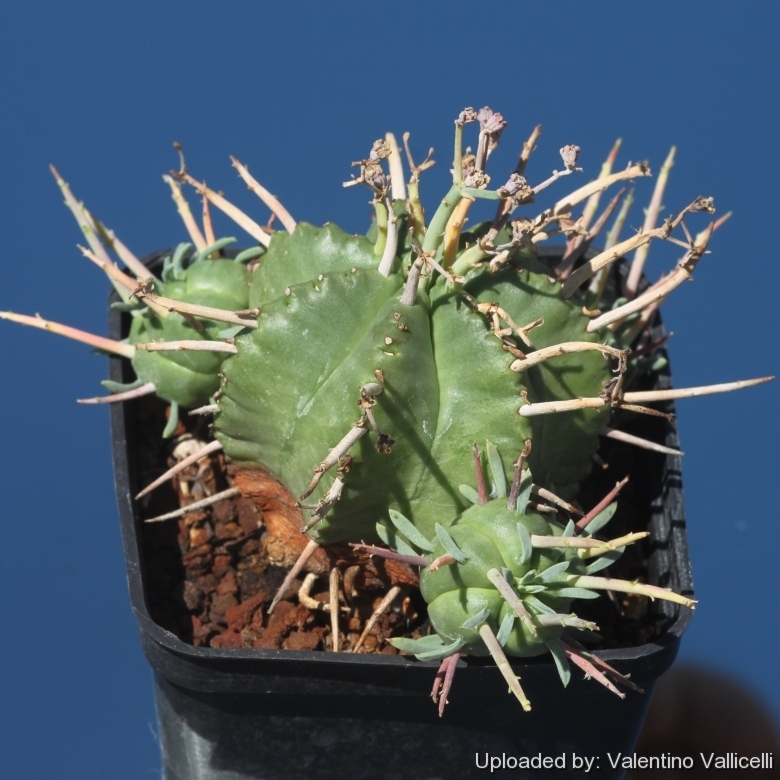
Euphorbia pillansii Photo by: Valentino Vallicelli
Origin and Habitat: Western Cape Province from the district of Ladismith westwards towards the Ceres district.
Habitat: Grows on sandstone.in the arid winter rainfall area, rain in habitat is scarce and occasional summer thunderstorms also occur. Euphorbia pillansiiSN|22374]]SN|22374]] can withstand temperatures down to -17,7º C.
Synonyms:
See all synonyms of Euphorbia pillansii
back
Accepted name in llifle Database:Euphorbia pillansii N.E.Br.Bull. Misc. Inform. Kew 1913, 122.Synonymy: 4
back
Description: It is an unisexual (Dioecious) collumnar Euphorbia branching from the base and above to form small clumps
Stem: Thick, fleshy, in tufts, about 30 cm tall, shallowly grooved between, with horizontal bands of light and dark gray-green, with thorny margins and short lateral branches 3-5 cm in diameter.
Ribs: Seven to nine-cornered with prominent tubercles 4 mm apart.
Leaves: Rudimentary, green and caducous.
Spines: Stout and rigid 1-5 cm long, characteristically mostly near the top of the plant simple or forked with 1 to six spikes branching several millimeters away from the plant. These spines are stiff and can be sharp and (in contrast to those of Euphorbia stellaespina) are pseudo-thorns, i.e. dried suberized branched peduncles and persistent performing the function of spines after the seed has been dispersed.
Flowers: Small about 5 mm pale-green or yellowish, born at branch apices arranged in short cymes reduced to solitary cyathia or in 2- to 6-rayed umbels. Peduncles 8-14 mm long. Nectar gland elliptic, dark green, just touching
Blooming season: Late winter to spring.
Fruit: Globose, minutely hispid.
Bibliography: Major references and further lectures
1) Urs Eggli “Illustrated Handbook of Succulent Plants: Dicotyledons” Volume 2. Springer, 2002
2) Alain Campbell White, Robert Allen Dyer, Boyd L. Sloane "The succelent Euphorbisae (southern Africa)" Abbey garden press, 1941
3) Hermann Jacobsen “Abromeitiella to Euphorbia” Blandford Press, 1960
4) Pauline Bohnen "More flowering plants of the Southern Cape" Still Bay Conservation Trust, 1995
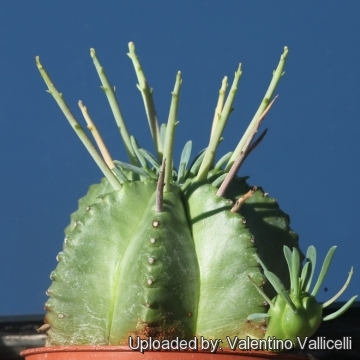 Euphorbia pillansii Photo by: Valentino Vallicelli
Euphorbia pillansii Photo by: Valentino Vallicelli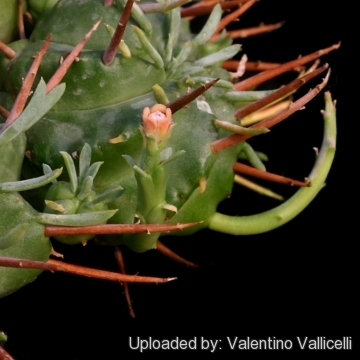 Euphorbia pillansii Photo by: Valentino Vallicelli
Euphorbia pillansii Photo by: Valentino Vallicelli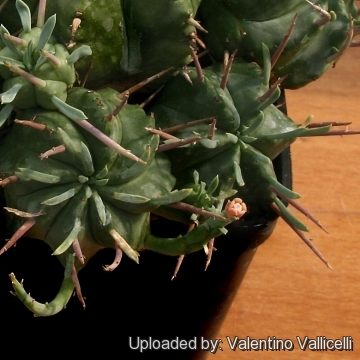 Euphorbia pillansii Photo by: Valentino Vallicelli
Euphorbia pillansii Photo by: Valentino Vallicelli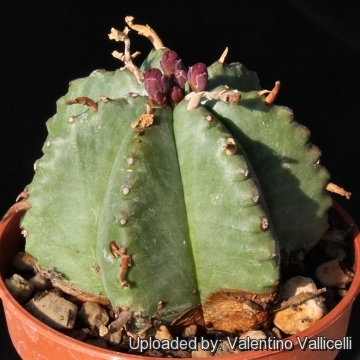 Euphorbia pillansii Photo by: Valentino Vallicelli
Euphorbia pillansii Photo by: Valentino Vallicelli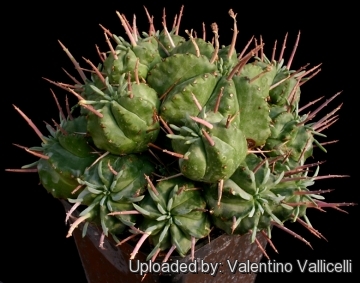 Euphorbia pillansii Photo by: Valentino Vallicelli
Euphorbia pillansii Photo by: Valentino Vallicelli Euphorbia pillansii Photo by: Valentino Vallicelli
Euphorbia pillansii Photo by: Valentino Vallicelli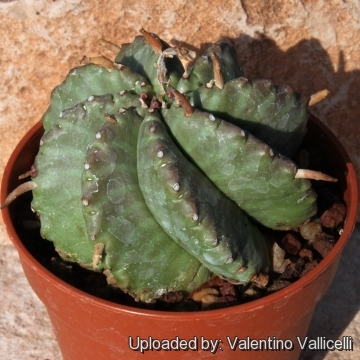 Euphorbia pillansii Photo by: Valentino Vallicelli
Euphorbia pillansii Photo by: Valentino Vallicelli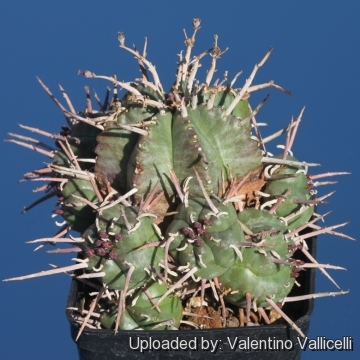 Euphorbia pillansii Photo by: Valentino Vallicelli
Euphorbia pillansii Photo by: Valentino VallicelliCultivation and Propagation: The cultivation of Euphorbia pillansiiSN|22374]]SN|22374]] is relatively easy. It grows well in a very draining mineral potting substrate, but it isn't picky about soil. The area to which this plant is native receives rains in both winter and summer, so it can be watered moderately all year around (except in the coldest month of the winter, as it rots easily, especially if overly wet). During the summer they enjoy average feeding and watering. When dormant in winter, keep it totally dry at or around 4°C, even though it seems to tolerate light frosts well. Mature healthy plants are tough and can also be grown out-of-doors where frost is not too severe, but when left out it is more sensitive to frost. They do need a lot of light to keep their compact growth-form, but different clones vary in their tolerance of full sunshine. But best colour if grown in protection in light shade, where the thick purple spines of this low-growing clumping columnar plant have the best colour. Sometimes, in really hot full sun all day long, a plant will bleach out a bit
Propagation: It is propagated by cuttings (It branches enthusiastically, and offsets are readily available). If you remove an offset, remember to let it dry for a week or so, letting the wound heal (cuttings planted too soon easily rot before they can grow roots). It is better to wash the cut to remove the latex.
Warning: As with all other Euphorbias when a plant get damaged it exudes a thick white milky sap known as latex. This latex is poisonous, and may irritate skin. Pay extreme attention not to get any in your eyes or mouth.
Cultivated plants must be handled carefully.


















